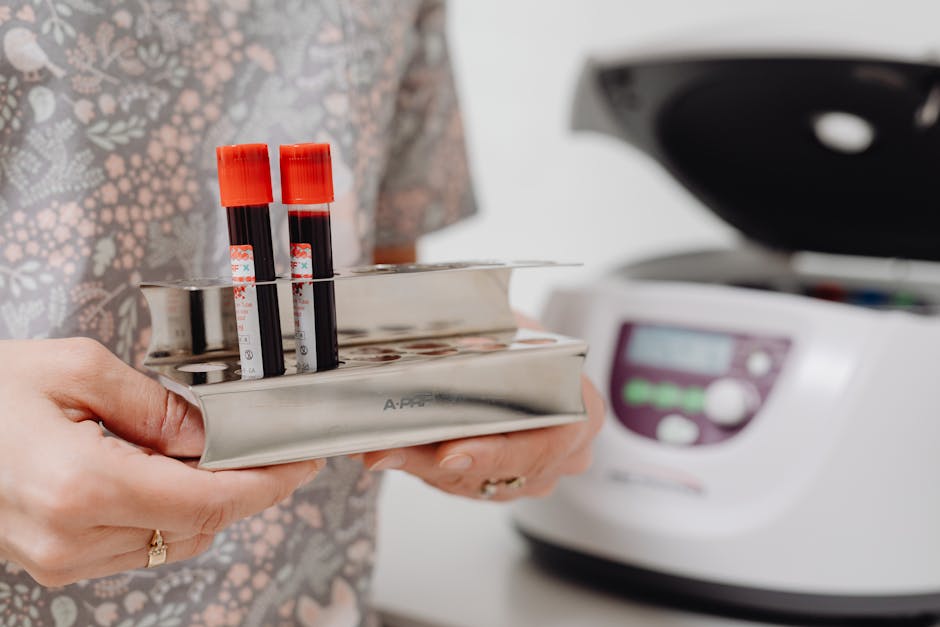Introduction to Cath Lab Nursing
Cath Lab nursing is unique, challenging, and rewarding, rolling a mix of technology, precision, and patient care into one. A Catheterization Laboratory, or Cath Lab, is where diagnostic and therapeutic procedures like angioplasties, implantations of pacemakers, and stent placements are performed. As a Cath Lab nurse, you dive into the heart of medicine, literally. Your role pivots on providing critical care before, during, and after these procedures, helping to stabilize patients, manage pain, and assist the cardiology team.
What sets Cath Lab nursing apart is the blend of advanced medical technology and direct patient care. You’ll work closely with cutting-edge equipment, aiding in procedures that can be life-saving. The pace? Fast. The pressure? High. But the satisfaction of seeing a patient recover? Immense. This role demands quick thinking, adaptability, and a solid foundation in cardiac care. You’re not just a nurse; you’re a key player in a team that fights heart disease head-on. If you’re drawn to high stakes and passionate about making a direct impact on patient health, Cath Lab nursing might just be your calling.
Essential Qualifications for Cath Lab Nurses
Becoming a Cath Lab nurse requires a unique set of skills and qualifications. First up, you need an RN license. This is non-negotiable. You’ve got to be officially registered as a nurse. Next, experience counts a lot here. We’re talking about at least a year, sometimes more, working in critical care or an intensive care unit (ICU). This isn’t just about ticking a box. It’s about being ready for the fast pace and high-pressure environment of the Cath Lab.
Certification is another key area. While not always mandatory, holding a Cardiac-Vascular Nursing Certification or a Critical Care Nursing Certification sets you apart. It tells everyone you’re serious about this field.
Being quick on your feet and having a sharp mind for detail are part of the game too. In the Cath Lab, situations change fast. You’ve got to adapt, make quick decisions, and keep the safety and care of the patient as your top priority.
Remember, communication skills are crucial. You’ll work as part of a team and you need to be clear and effective in your communication, whether it’s with patients or your colleagues.
In summary, to rock in the Cath Lab, you need the license, the experience, potentially some extra certification, quick thinking, and stellar communication skills. Get these in your arsenal and you’re good to go.
Understanding the Cath Lab Environment
The Cath Lab, short for Catheterization Laboratory, is a dynamic and fast-paced environment where doctors perform diagnostic and therapeutic procedures for cardiovascular diseases. Here, teamwork is not just a word; it’s your daily reality. Nurses play a crucial role, assisting doctors, monitoring patient vitals, and ensuring the smooth operation of this high-tech area. Be prepared for a steep learning curve. You’ll need to be quick on your toes, adaptable, and always ready to learn new things. Equipment in the Cath Lab is state-of-the-art, requiring you to understand and operate complex machinery. Remember, the pace can be intense, with emergencies adding an extra layer of urgency. However, the opportunity to make a significant impact on patient lives makes it incredibly rewarding. Welcome to the heart of the action.
Common Procedures Performed in the Cath Lab
In the Cath Lab, nurses will encounter a variety of procedures aimed at diagnosing and treating cardiovascular diseases. Among the most common is the angioplasty, where a small balloon is inserted and inflated to open up narrowed or blocked arteries. Then there’s the stent placement, a follow-up to angioplasty that involves placing a small wire mesh tube in the artery to keep it open. Not all procedures are about clearing blockages; electrophysiology studies (EPS) map the heart’s electrical activity to find irregular heartbeats or arrhythmias. Another key procedure is the pacemaker insertions, where a small device is placed in the chest or abdomen to help control abnormal heart rhythms. Nurses also assist with cardiac catheterizations, which involve a thin, flexible tube inserted into the heart via the groin or arm to diagnose heart conditions. Each of these procedures requires a precise set of skills and knowledge to ensure patient safety and the best outcomes. Being familiar with these can make a nurse an invaluable part of the Cath Lab team.
The Role of a Nurse in the Cath Lab
In the Cath Lab, nurses play a critical role. You’re not just any nurse; you’re part of a lifesaving team. Here, you’ll dive into the heart of patient care, quite literally. Your day-to-day involves assisting with complex cardiac procedures, monitoring patient vital signs during interventions, and being the calming presence patients need. You’re the eyes and ears for physicians, promptly responding to changes in patient conditions. Also, you prep patients before procedures, explaining what’s about to happen to ease their nerves. Post-procedure, you’re there for recovery, ensuring patients are stable and educating them on the next steps. It’s a high-stakes environment, but for those who thrive under pressure, it’s incredibly rewarding. Your role is crucial in the success of cardiac interventions and patient recoveries.
Skills Every Cath Lab Nurse Should Master
Cath Lab Nurses need a specific set of skills to excel in their roles. First off, you gotta know your way around advanced cardiovascular life support (ACLS). This is non-negotiable. You’re the frontline in emergencies, so being sharp in ACLS means you can make quick, life-saving decisions. Next up, mastering the art of patient monitoring is key. This means keeping an eye on vital signs and understanding the nuances of cardiac monitoring equipment. It’s not just about watching screens; it’s about knowing what those numbers and beeps mean for your patient.
Having solid technical skills is crucial too. You’ll be dealing with high-tech equipment like stent implantation devices and balloon angio catheters. You need to know this gear like the back of your hand because, in critical moments, there’s no time for hesitation. Plus, being a pro at inserting IVs and managing catheter sites is part of the daily grind. These tasks need to be done efficiently and, more importantly, safely.
Communication skills cannot be overlooked either. You’ll be the bridge between the patient and the rest of the healthcare team. Be clear, be concise, and, above all, be kind. Your words can ease a patient’s anxiety and provide clarity in complex situations.
Lastly, developing keen assessment skills is essential. You need to quickly evaluate and respond to a patient’s condition. Noticing the small changes before they turn into bigger issues can be the difference between recovery and a downward spiral.
In a nutshell, being a Cath Lab Nurse requires a mix of sharp technical abilities, quick thinking, and effective communication. These skills are your toolkit in a high-stakes environment, where every action can impact a patient’s outcome.
Challenges Faced by Cath Lab Nurses
Cath Lab nursing isn’t for everyone. It’s fast-paced and can be high-pressure. First off, you’re working in a specialized area where patients undergo procedures like angioplasties and implantations of pacemakers. These are critical, life-saving procedures. Facing emergencies is a daily reality. You need to stay calm under pressure, think on your feet, and be ready to act fast. Long hours are common, and there’s often the need to be on-call. This can disrupt your personal life. You’re part of a tight-knit team though, working closely with doctors and other nurses. Communication skills are key. You’ve got to be clear, quick, and accurate. There’s also a steep learning curve. You need to be highly skilled in using complex medical equipment and understanding detailed procedures. It’s challenging, but if you thrive in high-stakes environments, it’s incredibly rewarding.
Tips for Thriving in a Cath Lab Setting
Working in a cath lab means you are an essential part of a dynamic team focused on diagnosing and treating cardiovascular conditions. To thrive, you must be quick on your feet and ready to adapt. Here are straightforward tips to excel in this environment. Stay current with technology and techniques. The world of cardiovascular care is fast-paced, with advancements happening all the time. Keep up with the latest, and don’t be afraid to learn new things. Develop strong communication skills. Clear, concise communication with your team and patients makes a big difference. It helps in delivering efficient and effective care. Be detail-oriented. In procedures where millimeters matter, paying attention to the smallest details can have a huge impact on patient outcomes. Anticipate needs. Learn to predict what your team and patients will need next. This foresight can improve the flow of operations and reduce stress for everyone involved. Embrace the pressure. Cath lab work can be intense and demanding. Accepting and adapting to this pressure will make you a valuable team member. Cultivating these habits and skills will set you up for success and make your time in the cath lab rewarding.
Building a Successful Career in Cath Lab Nursing
Working in the Cath Lab is different—exciting, but demanding. The path to success here isn’t just about skill; it’s about attitude and the commitment to excellence. First off, understand that your role is critical. You’re not just assisting; you’re saving lives, one procedure at a time. Your ability to remain calm under pressure can literally be the difference between life and death.
Education never stops in the Cath Lab. Stay hungry for knowledge. The technology and techniques evolve constantly, and your expertise needs to keep pace. Seek out additional certifications specific to cardiovascular technology. It shows initiative and makes you a more valuable team member.
Be prepared for long hours. Emergencies don’t stick to a schedule, and when you’re on call, you’re on call. This means sudden shifts and working at odd hours. But here’s the thing: every case is a chance to learn something new, so embrace the unpredictability.
Communication is your best tool. Whether it’s with patients who are scared and need reassurance, or with doctors during high-stress procedures, how you communicate can affect outcomes. Be clear, be empathetic, and above all, be professional.
And remember, teamwork makes the dream work. Cath Lab nurses work closely with cardiologists, radiographers, and other specialists. Being a team player isn’t just good practice; it’s essential. Support your colleagues, and they’ll support you.
To cap it off, find a balance. The intensity of the job can be taxing, so make self-care a priority. Managing stress isn’t a luxury; it’s a necessity for longevity in this field. Follow these pointers, and you’re not just building a career; you’re carving out a path to be a leader in Cath Lab nursing.
Conclusion: The Impact of Cath Lab Nursing on Patient Care
Cath Lab nursing isn’t just another job; it’s a critical role that directly affects patient outcomes. By being on the front lines, Cath Lab nurses play a pivotal role in the treatment of cardiovascular diseases, providing care that can literally save lives. Their expertise in managing pre and post-operative care, monitoring patients closely during procedures, and being able to act quickly in emergencies makes them invaluable. The Impact? Better recovery rates, less time spent in the hospital for patients, and a significant contribution to the overall success of heart health treatments. Every action a Cath Lab nurse takes, from calming a nervous patient before a procedure to ensuring all medical equipment is functioning correctly, adds up to a high-quality care experience that can make all the difference. That’s the heart of Cath Lab nursing – making a real, tangible difference in patients’ lives every single day.



